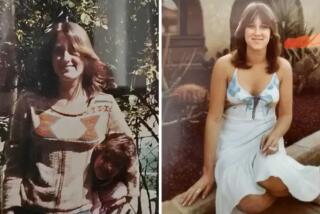Kraft Convicted of Killing 16 : Guilty in O.C. Slayings and Mutilations of Young Men : He Was Depicted as Worst Mass Murderer in History
Randy Steven Kraft, a soft-spoken computer consultant depicted by prosecutors as perhaps the worst serial killer in U.S. history, was convicted today of murdering 16 young men in Orange County, most of them sexually mutilated and dumped along freeways over more than a decade.
Kraft, 44, appeared stunned when the clerk in Santa Ana Superior Court read the first âguiltyâ verdict, for the earliest murder. Families of victims broke into tears as they heard verdicts involving their loved ones.
The jurors, who had been sequestered during their 11 days days of deliberations, convicted Kraft on every murder count and on one count of mayhem and one of sodomy.
The verdicts came six years to the very week after Kraftâs May 14, 1983, arrest by two California Highway Patrol officers who found a dead Marine in the front passenger seat of his car.
First Phase of Trial
The verdicts brought to a close the first phase of a gruesome nine-month trial in Santa Ana that subjected the jury of 10 men and two women to day upon day of pictures and evidence about the killings. Courtroom proceedings centered on the jargon and details of human pathology, of Kraftâs meanderings in the world of Southern Californiaâs gay bars and of his driving--impulsive, nighttime excursions up and down the freeways.
âI like to drink and drive,â Kraft told Long Beach police in 1975, saying he âreally got into one of my driving fitsâ on the night he was last seen with one of his alleged victims.
The verdicts were called âexcellentâ by Chief Deputy Dist. Atty. James G. Enright, who said he had no regrets that his office decided to try Kraft on 16 murders, which took place between 1971 and 1983. That controversial decision had brought criticism from those who thought that it would result in unnecessary time and expense.
âUtter Disappointmentâ
Kraft attorney C. Thomas McDonald said Kraftâs private reaction was âutter disappointment, of course.â
Among the relatives in court today was Judy Nelson, mother of 18-year-old victim Geoffrey Alan Nelson. She held hands tightly with her daughter, Beth Nelson, and her sister, Sue Centori. They were red-faced from crying even before the verdicts were read. But when they heard Kraft convicted of Geoffrey Nelsonâs murder, the three women hugged tightly and began crying again.
âI know heâs guilty. He knows heâs guilty. Every mother in there (the courtroom) had 16 beautiful sons, and he should pay,â Judy Nelson said.
Members of Kraftâs jury were not available for comment and will not be available until after their next task: deciding whether he should be sentenced to die. In this penalty phase, which will begin Tuesday, prosecutors will be allowed to introduce evidence that Kraft actually killed up to 29 other men in Southern California, Oregon and Michigan.
Other Killings
Described as a quiet, well-liked businessman who enjoyed walking his dog, Kraft, by some accounts, lived a normal existence in a small Long Beach bungalow he shared with another man. Some of the murders occurred during times when Kraft was very much involved with family matters.
He has also been charged with killings in Oregon and Michigan that took place when Kraft was traveling in those states on business, but those allegations were not part of the Orange County trial.
Kraft, who did not testify at his trial, has denied killing anyone.
âI donât belong here,â he said in a 1983 interview with The Times from the Orange County Jail.
Legal experts say the massive effort put together by Kraftâs three lawyers to defend him against so many murders is likely to make the case and its possible $10-million cost the most expensive criminal proceeding in the stateâs history.
Kraftâs case is also unprecedented statewide because of the 45 deaths linked to him. Up to now, Californiaâs most prolific mass murderer has been Juan Corona, twice convicted of murdering 25 itinerant farm workers whose bodies were found buried in fruit orchards near Yuba City in 1971.
More to Read
Sign up for Essential California
The most important California stories and recommendations in your inbox every morning.
You may occasionally receive promotional content from the Los Angeles Times.










